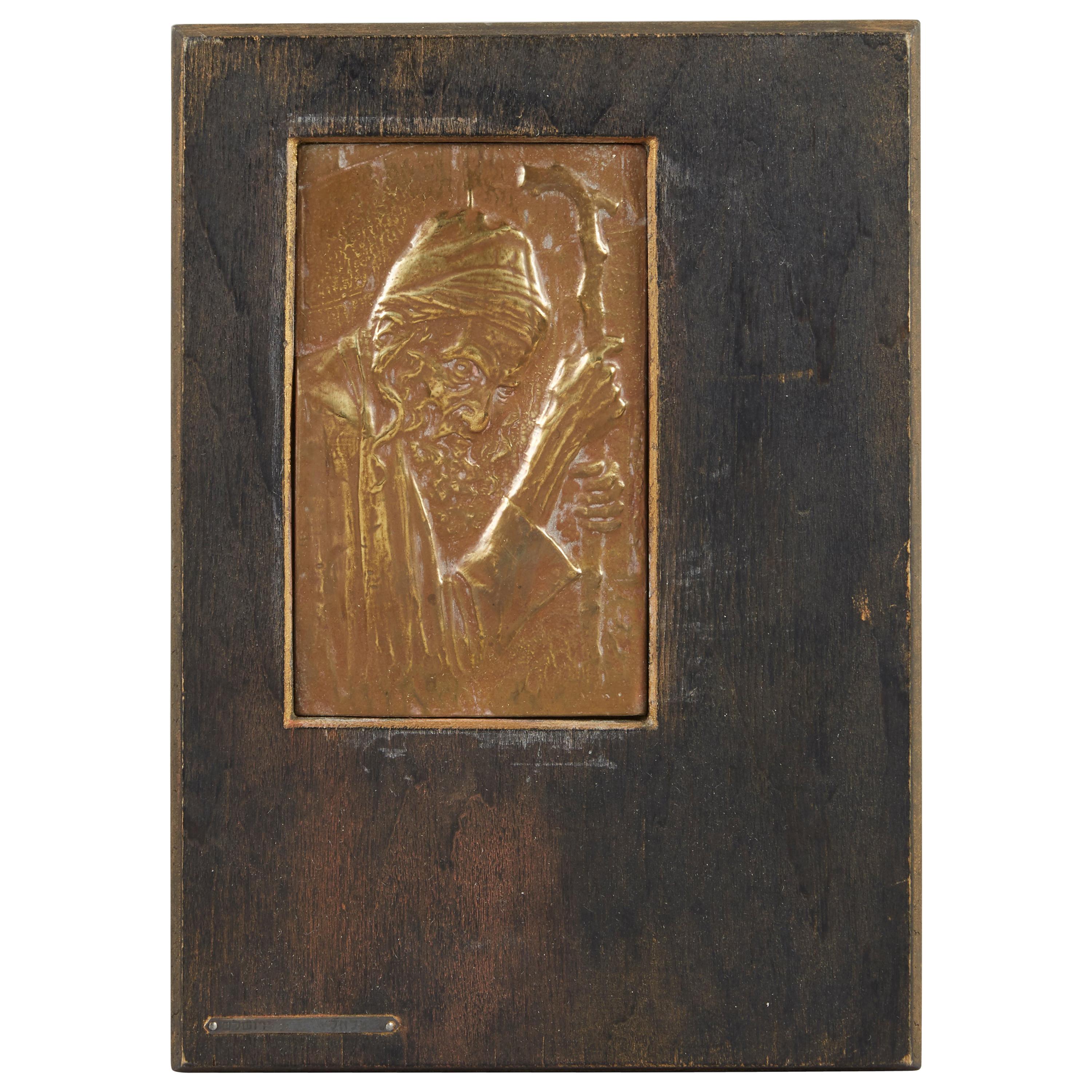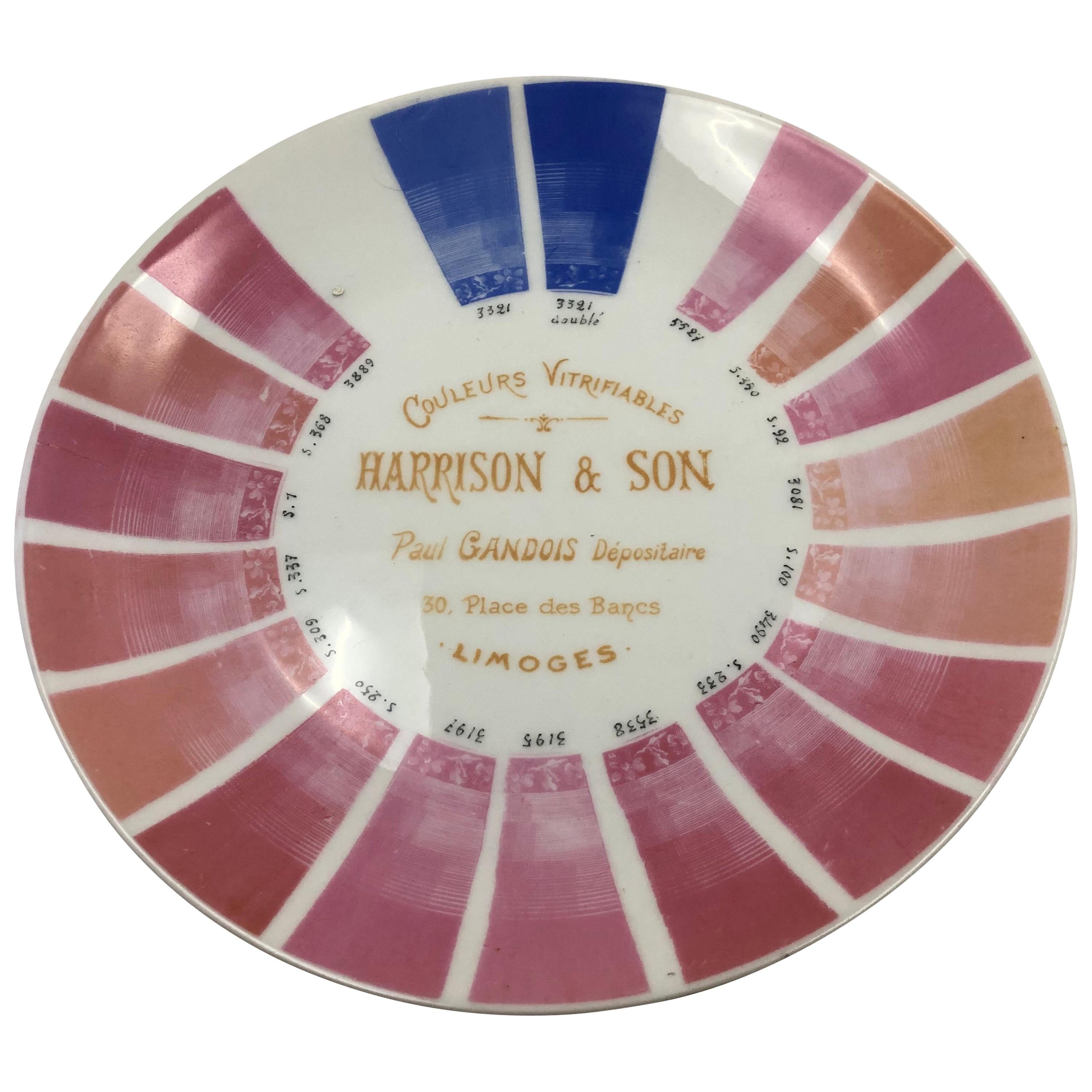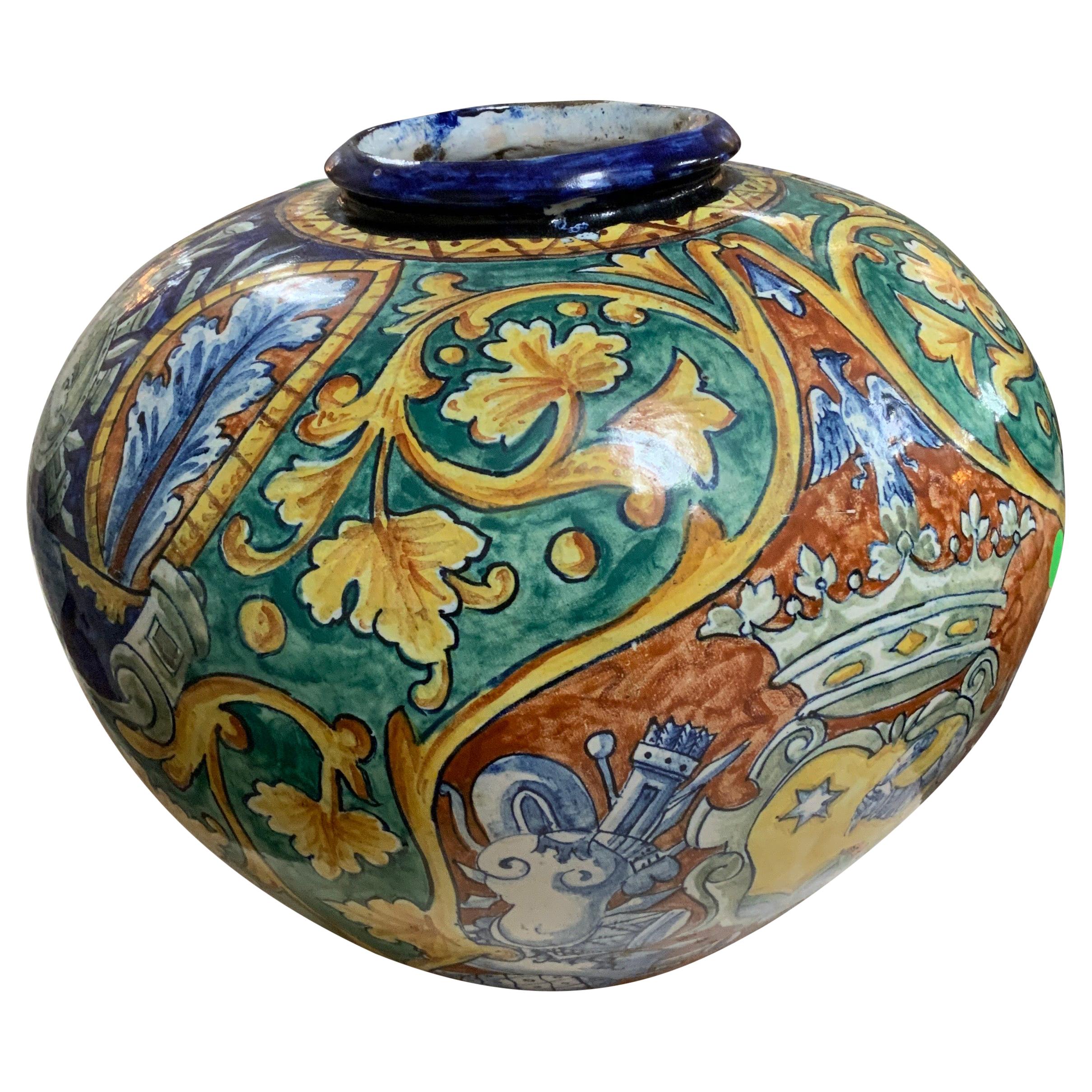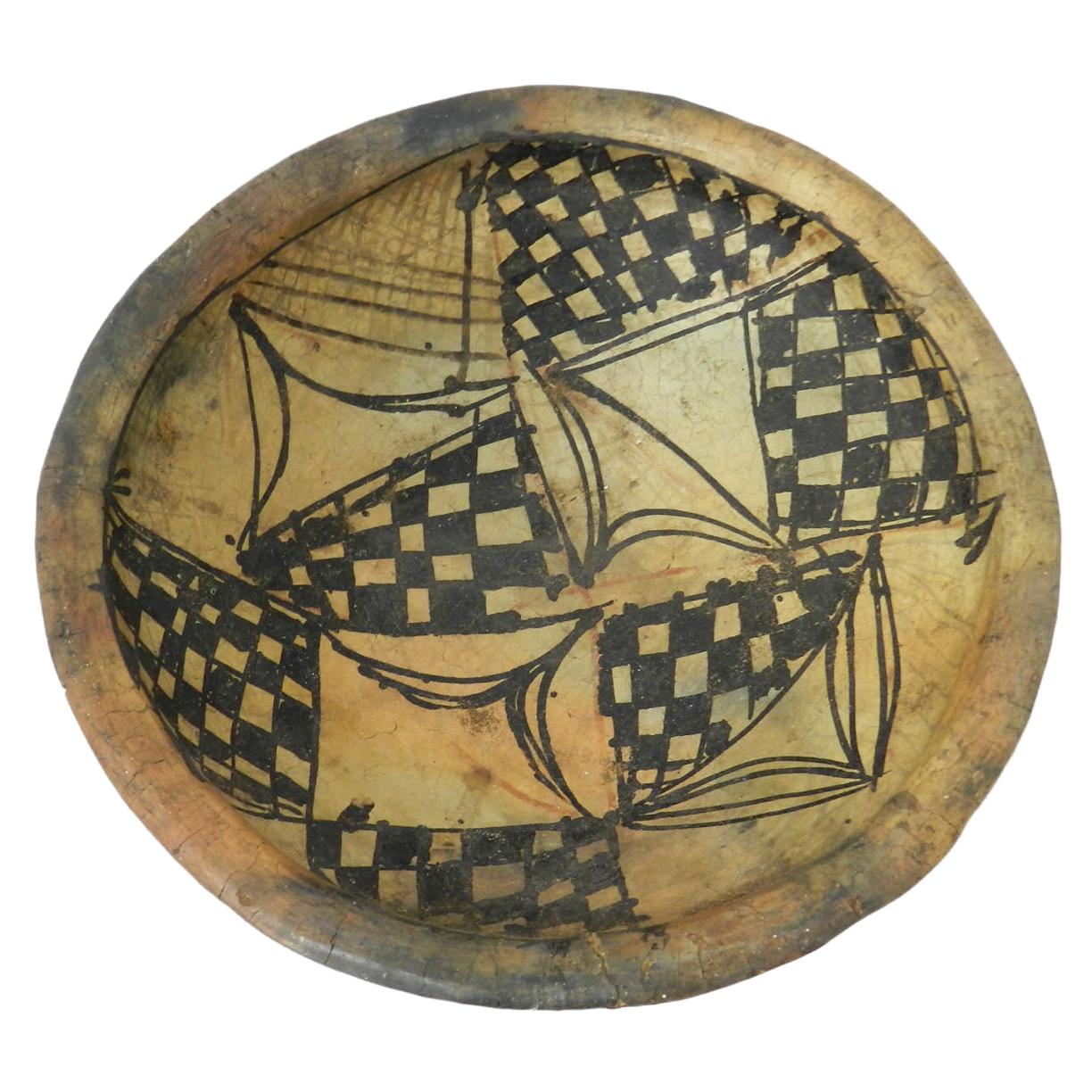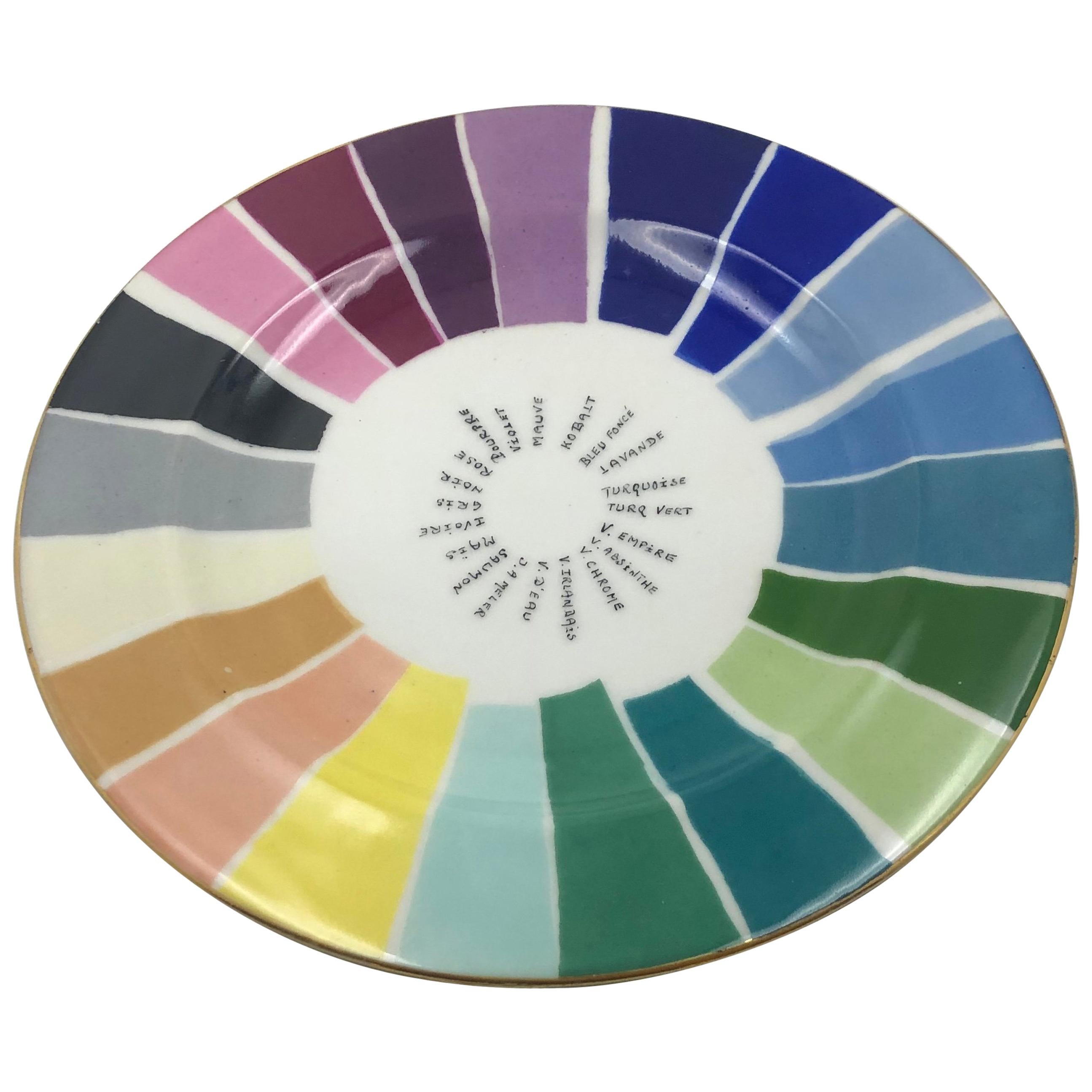Items Similar to Early 20th Century Armenian Pottery Plate from Jerusalem
Want more images or videos?
Request additional images or videos from the seller
1 of 11
Early 20th Century Armenian Pottery Plate from Jerusalem
About the Item
Extremely rare Armenian pottery plate depicting the mosaic floor at the ancient synagogue of Beit Alpha in Israel, circa 1920.
Jerusalem's ancient Armenian Community experienced a major increase in numbers as survivors of the Armenian Genocide perpetrated by the government of the Ottoman Empire beginning in 1915 found refuge in Jerusalem's Armenian Quarter. The industry is believed to have been started by refugees from Kütahya, a city in western Anatolia noted for its Iznik pottery. The tiles decorate many of the city's most notable buildings, including the Rockefeller Museum, American Colony Hotel, and the House of the President of Israel.
David Ohannessian (1884–1953), who had established a pottery in Kütahya in 1907, is credited with establishing the Armenian ceramic Craft industry in Jerusalem. In 1911 Ohannessian was commissioned with installing Kütahya tile in the Yorkshire home of Mark Sykes. In 1919 Ohannessian and his family fled the Armenian Genocide, finding temporary refuge in Aleppo; they moved to Jerusalem when Sykes suggested that they might be able to replicate the broken and missing tiles on the Dome of the Rock, a building then in a decayed and neglected condition. Although the commission for the Dome of the Rock did not come through, the Ohannession pottery in Jerusalem succeeded, as did the Karakashian the painters and Balian the potters that Ohannessian brought with him from Kuttahya to help him with the project in 1919. after about 60 years new Armenian artists started to have their own studio’s
In 2019 the Israel Museum mounted a special exhibition of Jerusalem pottery in its Rockefeller Museum branch location.
The ancient synagogue of Beit Alpha is located in the Beit She'an Valley, in the north-east Israel. The nearby ruins of Khirbet Beit Ilfa preserve the ancient name.
The mosaic floor of the synagogue was discovered in 1929, when members of Kibbutz Beit Alpha dug irrigation channels for their fields. Excavations were carried out the same year, exposing mosaics preserved intact for almost 1,500 years. Later excavations, in the early 1960s, exposed remains of some houses, indicating that the synagogue had stood in a Jewish village of the Byzantine period (5th-6th centuries).
The entire prayer hall is paved in mosaic. The floor of the western aisle is decorated with squares in geometric patterns; the eastern aisle is entirely paved in undecorated white mosaic.
The colorful mosaic floor of the nave is divided into three distinct panels, all enclosed by a decorated band with a variety of motifs: geometric patterns, fruit, birds and animals.
Appears in the central panel. These astrological signs, though condemned by the prophets, were widely used as decorative elements in both churches and synagogues of the Byzantine period. The twelve signs are arranged in a circle and accompanied by their Hebrew names. In the center of the zodiac, the sun god Helios is represented seated in a chariot drawn by four horses. The Four Seasons appear in the corners of the panel in the form of busts of winged women wearing jewels; they are inscribed with the Hebrew months initiating each season: Nisan (spring), Tamuz (summer), Tishri (autumn) and Tevet (winter).
The splendid mosaic floor of the ancient synagogue of Beit Alpha is one of the finest uncovered in Israel. It is unique in both motifs and workmanship. The synagogue itself was small and simply built, but its mosaics represent a Folk Art that is striking, very colorful and rich in motifs. The synagogue was in use during the Byzantine and the Early Islamic periods (7th-8th centuries).
- Dimensions:Height: 1 in (2.54 cm)Diameter: 11 in (27.94 cm)
- Materials and Techniques:Pottery,Glazed
- Place of Origin:
- Period:
- Date of Manufacture:circa 1930
- Condition:
- Seller Location:New York, NY
- Reference Number:1stDibs: LU5281219345251
About the Seller
5.0
Recognized Seller
These prestigious sellers are industry leaders and represent the highest echelon for item quality and design.
Established in 2006
1stDibs seller since 2020
92 sales on 1stDibs
- ShippingRetrieving quote...Ships From: New York, NY
- Return PolicyA return for this item may be initiated within 3 days of delivery.
More From This SellerView All
- Early 20th Century Shabbat Table Cover from JerusalemLocated in New York, NYFolk Art Shabbat table cover, Jerusalem, circa 1900. Embroidered at the four corners with the holy places for Jews in Israel, and with the wailing wall at the center. The Hebrew rectangular text is a traditional song sung by Jews every Friday night upon returning home from synagogue prayer. It signals the arrival of the Jewish Sabbath, welcoming the angels who accompany a person home on the eve of the Sabbath. The words to the song translate as follows: Peace be with you, ministering angels, messengers of the Most High, Messengers of the King of Kings, the Holy One, Blessed be He. Come in peace, messengers of peace, messengers of the Most High, Messengers of the King of Kings, the Holy One, Blessed be He. Bless me with peace, messengers of peace, messengers of the Most High, Messengers of the King of Kings, the Holy One, Blessed be He. Go in peace, messengers of peace, messengers of the Most High, Messengers of the King of Kings, the Holy One, Blessed be He. The Hebrew text around the Wailing Wall scene...Category
Early 20th Century Israeli Decorative Art
MaterialsTextile
- Early 20th Century Silver Plate Plaque by Bezalel School JerusalemLocated in New York, NYBezalel silver plate plaque depicting Moses at Mount Sinai, made in Jerusalem, circa 1925, marked "Bezalel Jerushalem" in Hebrew and "Made in Palestine,...Category
Early 20th Century Israeli Decorative Art
MaterialsSilver Plate
- Mid-20th Century Copper Synagogue Decoration from JerusalemLocated in New York, NYHand hammered copper sheet synagogue decoration depicts the Decalogue (Ten Commandments) flanked by rampant lions standing on a column, framed by an arch with two stars of David at t...Category
Mid-20th Century Israeli Decorative Art
MaterialsSheet Metal
- Early 20th Century Brass Plaque by Bezalel School JerusalemLocated in New York, NYBezalel brass plaque depicting a Jewish elder next to the Western Wall, made in Jerusalem, circa 1920, bearing a small metal label engraved "Bezalel Jeru...Category
Early 20th Century Israeli Decorative Art
MaterialsBrass
- Jews at Rachel's Tomb-Early 20th Century Bronze Plaque by Moshe Murro, JerusalemLocated in New York, NYBronze plaque with a relife of the figures of three elderly Jews and young Jew with Rachel's Tomb in the background. Made in Bezalel school, Jerusalem by Moshe Murro, circa 1915. Si...Category
Early 20th Century Israeli Decorative Art
MaterialsBronze
- Early 20th Century Dutch Ceramic Commemorative Plate by Petrus Regout MaastichtLocated in New York, NYCeramic commemorative plate, The Netherlands, Amsterdam, 1925 Blue and white ceramic plate made in honor of a new building for the Jewish hospital of the Jewish-Dutch charity fund es...Category
20th Century Dutch Decorative Bowls
MaterialsPorcelain
You May Also Like
- Porcelain Sample Plate, Early 20th CenturyBy Haviland & Co.Located in Spencertown, NYTheodore Haviland, Limoges, France Painted with various hand-enameled color references and numbers over-glaze beneath color tabs. Marked to the front in orange-yellow enamel: "Coule...Category
Early 20th Century French Industrial Decorative Dishes and Vide-Poche
MaterialsPorcelain
- Early 20th Century Ceramic Vase from SpainLocated in Dallas, TXThis vase origins from Spain, circa 1920. Made with ceramic.Category
Early 20th Century Spanish Decorative Bowls
MaterialsCeramic
- African Pottery Bowl with Geometric Pattern Early 20th CenturyLocated in Labrit, LandesEarly 20th century African pottery bowl In good vintage condition for its age.Category
Early 20th Century African Primitive Decorative Bowls
MaterialsPottery
- Theodore Haviland, Limoges Sample Plate, Early 20th CenturyLocated in Spencertown, NYPainted with various hand-enameled colors, references and numbers over-glaze beneath color tabs. Marked to the underside near foot "THEODORE HAVILAND/ FRANCE" in green enamel "A. GUI...Category
Early 20th Century French Industrial Decorative Dishes and Vide-Poche
MaterialsPorcelain
- Early 20th Century Ceramic Water Vessel from MexicoLocated in San Miguel de Allende, GuanajuatoEarly 20th century ceramic water vessel from Nahua communities of southern Veracruz and northern Puebla, Mexico.Category
Early 20th Century Mexican Rustic Pottery
MaterialsCeramic, Clay, Terracotta
- Abstract Wall Ceramic Plat by Gabriel Musarra Vallauris 20th Century Design 1950By Gabriel MusarraLocated in Neuilly-en- sancerre, FRGabriel Musarra Abstract stoneware wall ceramic plate signed by Gabriel Musarra Unique handmade ceramic realised in Vallauris Circa 1950 ...Category
Mid-20th Century French Mid-Century Modern Decorative Dishes and Vide-Poche
MaterialsCeramic
Recently Viewed
View AllMore Ways To Browse
Early 20th Century Jewels
Early American Painters
Jewish Wall Art
Black Divider Wall
Black Bird Plates
Tile Plate
Mosaic Plate
American Folk Art House
Astrology Furniture
Springer Wall Mount
Black And White Decorative Plates
Pattern Wall Tile
Wall Ceramic Panels
Ceramic Wall Birds
Bird Tile
Bust Wall Art
Horse Jewels
Glazed Wall Panel
